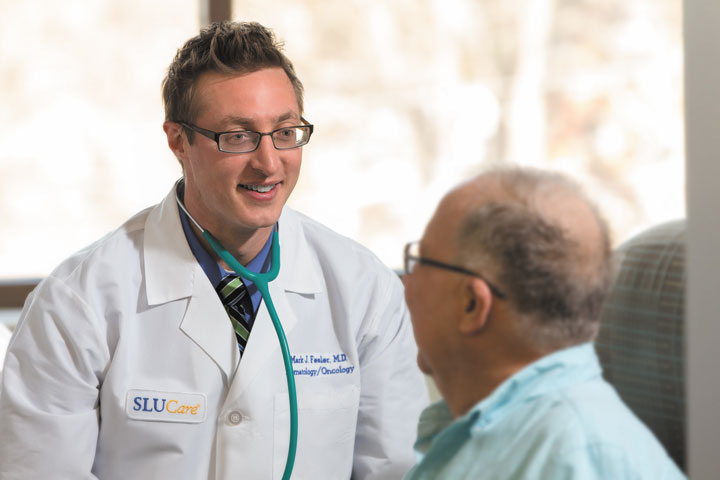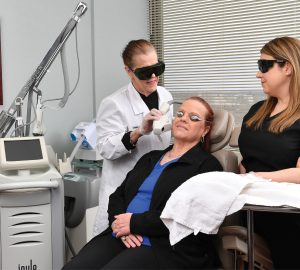‘Relapse’ is not a word you want to hear when you have cancer. Within a year of being treated for a rare type of non-Hodgkin’s lymphoma, Dennis Steensen’s cancer came back with a vengeance. “I’d had an autologous bone marrow transplant of my own stem cells, and the remission rate is usually at least five years,” he recalls. “That the cancer came back so fast was bad news. My doctors didn’t hold out hope. Patients who relapse so soon often don’t last more than a year.”
Then he met Dr. Mark Fesler, director of The Center for Outpatient Blood and Marrow Transplantation, a collaboration between SLUCare (the physicians of Saint Louis University) and SLU Hospital. “After a course of salvage chemotherapy, we gave him a reduced-intensity allogeneic, unrelated-donor-cell transplant in July,” says Fesler, assistant professor of internal medicine, division of hematology/ medical oncology at SLU School of Medicine. “He’s responding well, and his prognosis is good.”
Enduring two rounds of chemo and/or radiation and two bone marrow transplants in less than two years is no picnic, admits Steensen, a 65-year-old Richmond Heights resident and former warehouse worker at Schnucks. “But the second time around was much easier on me,” he says. “Thanks to the Outpatient Center, I went to the hospital on treatment days but was able to recuperate at home. It was a blessing to sleep in my own bed at night. My recovery was faster, and my morale stayed high.” Patients are required to have a caregiver 24/7 for several months following the transplant, and SLUCare educates them to recognize symptoms requiring emergency attention, he adds. The Center, established in 2012, is the only outpatient bone marrow transplant option in the region and one of fewer than 10 in the nation. “It expands the scope of our inpatient program, which has treated patients from around the world since 1990,” Fesler explains. Due to advances in supportive care, most transplants can now be done on an outpatient basis, he notes. “It’s as effective and safe as an inpatient procedure, and patients report much higher levels of comfort, satisfaction and control, which benefits the healing process,” he says. “It takes a multidisciplinary team of experts to carry it off, and that’s what we offer.”
Bone marrow, the spongy material found inside bones, is where most of the body’s blood cells are developed and stored. A transplant may be needed when bone marrow stem cells, which produce other blood cells, are damaged by disease or by high doses of chemo or radiation needed to cure some cancers. The goal of a transplant is to transfuse healthy blood stem cells into the patient and restore healthy cell production and function. Steensen, still in remission, feels terrific. “Dr. Fesler is as giddy as I am! I’m so grateful to the man upstairs, the donor and the SLU BMT team. They gave me another chance at life.”
Photo by SLUCare
[The Center for Outpatient Blood and Marrow Transplantation is located at SLU Hospital, 3655 Vista Ave. For more information, call 314.268.7700 or visit slucare.edu/bmt.]








